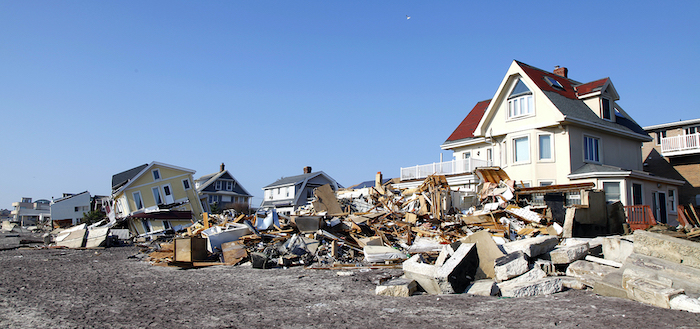Dangers From Asbestos Debris on Beaches

Asbestos can end up on beaches after a hurricane, flood or other natural disasters. Severe weather can damage asbestos-containing structures and create asbestos debris. Asbestos may also wash up on shore if it is dumped in local waterways.
While asbestos on beaches may not be the largest source of asbestos-related concerns, no level of exposure is safe. It can cause mesothelioma, lung cancer, asbestosis and other serious illnesses.
Request a Free 2024 Mesothelioma Guide
How Does Asbestos Get on Beaches?
There are several ways asbestos can get on beaches. For example, asbestos may:
- Wash ashore after contamination of connected waterways
- Litter beaches after natural disasters damage homes and other structures
- Wash ashore from battleships or other wrecks at sea
- Wash onto beaches during flooding
One of the largest concerns for the public is asbestos after natural disasters. Wildfires, hurricanes, floods and other occurrences can damage structures. Many older structures contain asbestos-containing materials.
Homes and structures built before 1979 are most likely to contain asbestos. It may be present in drywall, insulation, ceiling tiles, floor tiles and several other products.
What Beaches Have Had Asbestos?
Throughout the years, asbestos has been identified at:
- Illinois Beach State Park (Chicago)
- Jersey Shore (New Jersey)
- Wamberal Beach (Australia)
- Darwin’s Beaches (Australia)
- Prestwick Beach (Scotland)
- Mount Batten Beach (England)
Asbestos ended up on these beaches from various venues, including:
- Runoff from an asbestos superfund site
- Hurricanes and cyclones
- The collapse of an asbestos-containing pier
- Buried asbestos debris uncovered by erosion
- Debris from World War II washing ashore
What Does Asbestos on Beaches Look Like?
Asbestos can appear on beaches in various forms. It may look like normal building debris, or it may appear as a fluffy piece of insulation.
Some residents claim they’ve picked up rocks and pieces of sea glass that were actually asbestos.
Asbestos fibers themselves are invisible to the naked eye. People should be aware of materials that commonly contain the carcinogen to help prevent exposure.
Many beaches with known asbestos litter have signs posted. They warn individuals of potential contamination. This is a particular concern for beachgoers, local residents, dog walkers and other people that frequent beaches.
How Dangerous Is Asbestos on Beaches?
Some studies have conflicting conclusions about how dangerous asbestos is on beaches. Large amounts of exposure or long-term exposure can be more dangerous than small, short-term exposures.
For example, someone with years of occupational exposure is more at risk of developing mesothelioma than someone exposed once when walking along the beach.
However, both are at risk because no level of exposure is safe. Regardless of the amount or duration of exposure, you should always seek medical care as soon as possible. Your health care provider will want to maintain frequent checkups to monitor for any symptoms of an asbestos illness.
Asbestos Cleanup Efforts on Beaches
City officials have handled concerns about asbestos on beaches differently. Some note the low amounts of asbestos and simply warn the public. Others shut beaches down completely until cleanup efforts are completed.
Asbestos cleanup efforts may entail:
- Wetting down materials to help contain fibers
- Wearing proper personal protective equipment (PPE) such as special face masks
- Disposing of materials in sealed, labeled bags or containers
Asbestos must be cleaned up by a certified asbestos abatement contractor. They are trained to identify, handle and dispose of asbestos safely. Untrained individuals should never try to handle asbestos on their own.
Untrained asbestos handling puts individuals at risk of exposure and associated diseases.